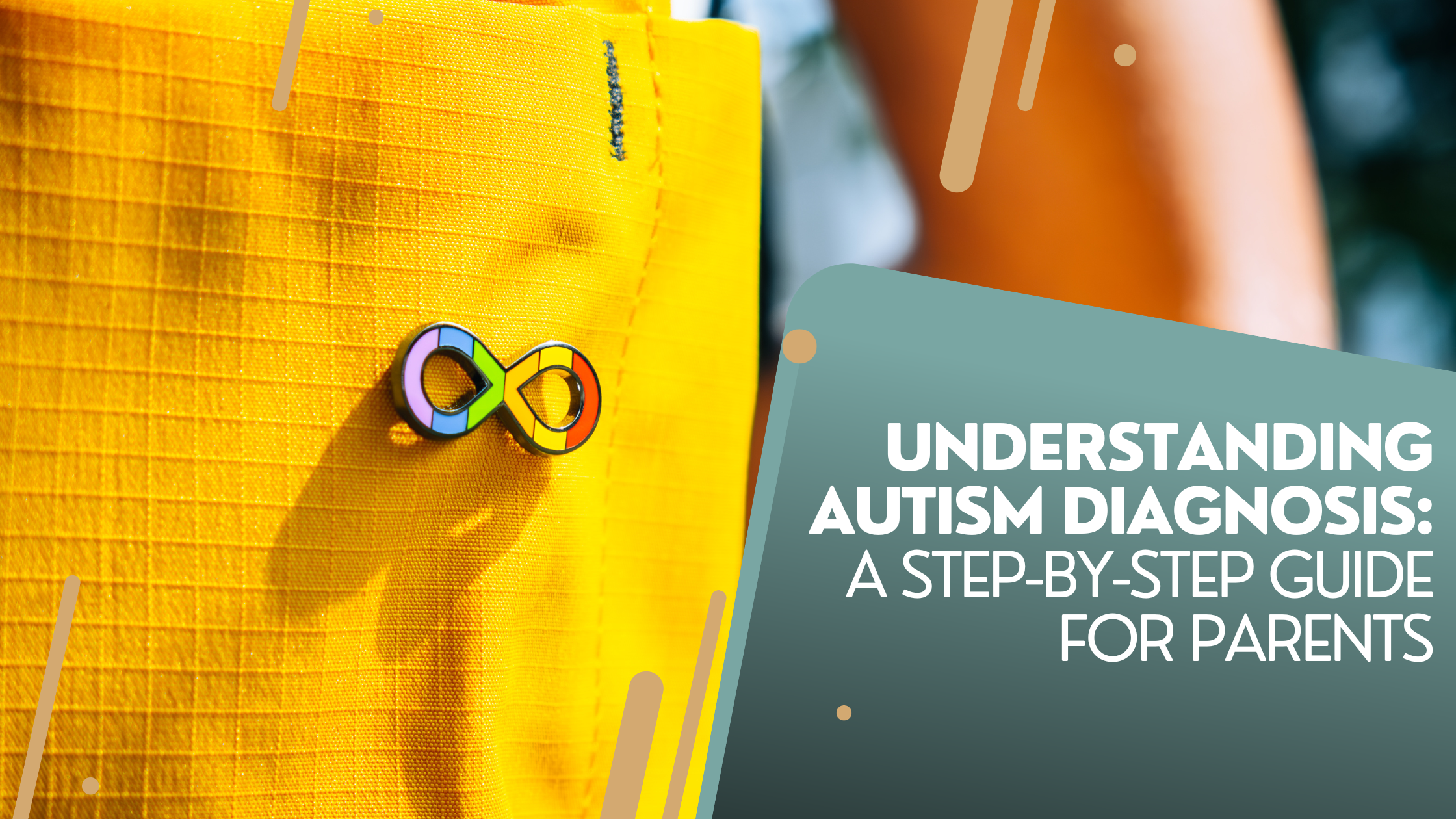Understanding Autism Diagnosis
April 2, 2024

Being a parent can be an incredible journey filled with joy and challenges. One challenge that some parents may face is understanding and navigating the process of diagnosing autism spectrum disorder (ASD) in their child. In this blog post, we’ll break down the steps involved in diagnosing autism, provide a checklist for parents, and offer insights into the criteria used by professionals.
Understanding Autism Diagnosis:
Autism spectrum disorder (ASD) is a developmental disorder that affects how a person interacts and communicates with others, as well as how they perceive and understand the world around them. Diagnosing autism involves a comprehensive evaluation by a team of healthcare professionals, including pediatricians, psychologists, and developmental specialists.
Step-by-Step Guide to Autism Diagnosis:
- Recognize Early Signs: Pay attention to early signs of autism in your child, such as delayed speech development, difficulty with social interactions, repetitive behaviors, and sensitivity to sensory stimuli.
- Consult with Healthcare Provider: Schedule an appointment with your child’s pediatrician if you have concerns about their development. Discuss your observations and seek guidance on next steps.
- Referral to Specialists: Depending on your child’s symptoms and needs, your pediatrician may refer you to specialists such as psychologists, developmental pediatricians, or speech therapists for further assessment.
- Comprehensive Evaluation: The evaluation process typically involves a series of assessments, including developmental screenings, interviews with parents or caregivers, direct observation of the child, and standardized tests to assess communication, social interaction, and behavior.
- Collaborative Team Approach: Professionals from different disciplines work together to gather information and provide a comprehensive evaluation of your child’s development. This team approach ensures a thorough assessment and accurate diagnosis.
- Review of Diagnostic Criteria: The diagnostic criteria for autism are outlined in the Diagnostic and Statistical Manual of Mental Disorders (DSM-5). These criteria include deficits in social communication and interaction, as well as restricted, repetitive patterns of behavior, interests, or activities.
- Feedback and Recommendations: Following the evaluation, the healthcare team will provide feedback on the assessment results and recommendations for interventions and support services tailored to your child’s needs.
Checklist for Parents:
- Observe and document your child’s behaviors and developmental milestones.
- Schedule regular check-ups with your child’s pediatrician.
- Seek referrals to specialists if you have concerns about your child’s development.
- Prepare for the evaluation by gathering relevant information about your child’s medical history and developmental milestones.
- Advocate for your child’s needs and collaborate with the healthcare team to ensure they receive appropriate support and interventions.
Diagnosing autism requires a collaborative effort involving healthcare professionals, parents, and caregivers. By recognizing early signs, seeking evaluation, and advocating for your child’s needs, you can ensure they receive the support and interventions necessary for their development and well-being. Remember, every child is unique, and early intervention can make a significant difference in their journey with autism.
By providing this comprehensive guide, we hope to empower parents with the knowledge and resources they need to navigate the autism diagnosis process effectively. If you have any questions or concerns, don’t hesitate to reach out to your healthcare provider for guidance and support. Together, we can create a supportive and inclusive environment for individuals with autism to thrive.
